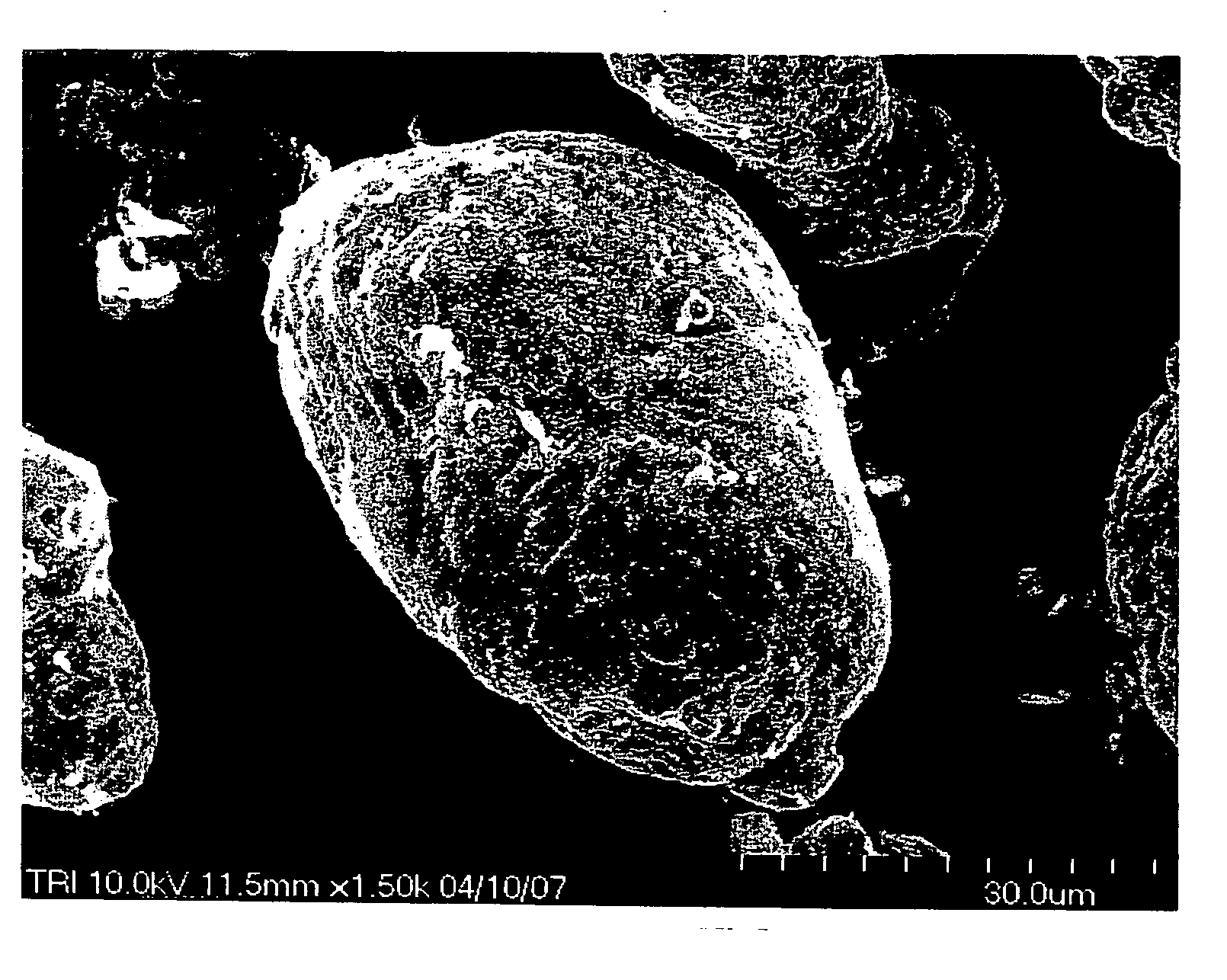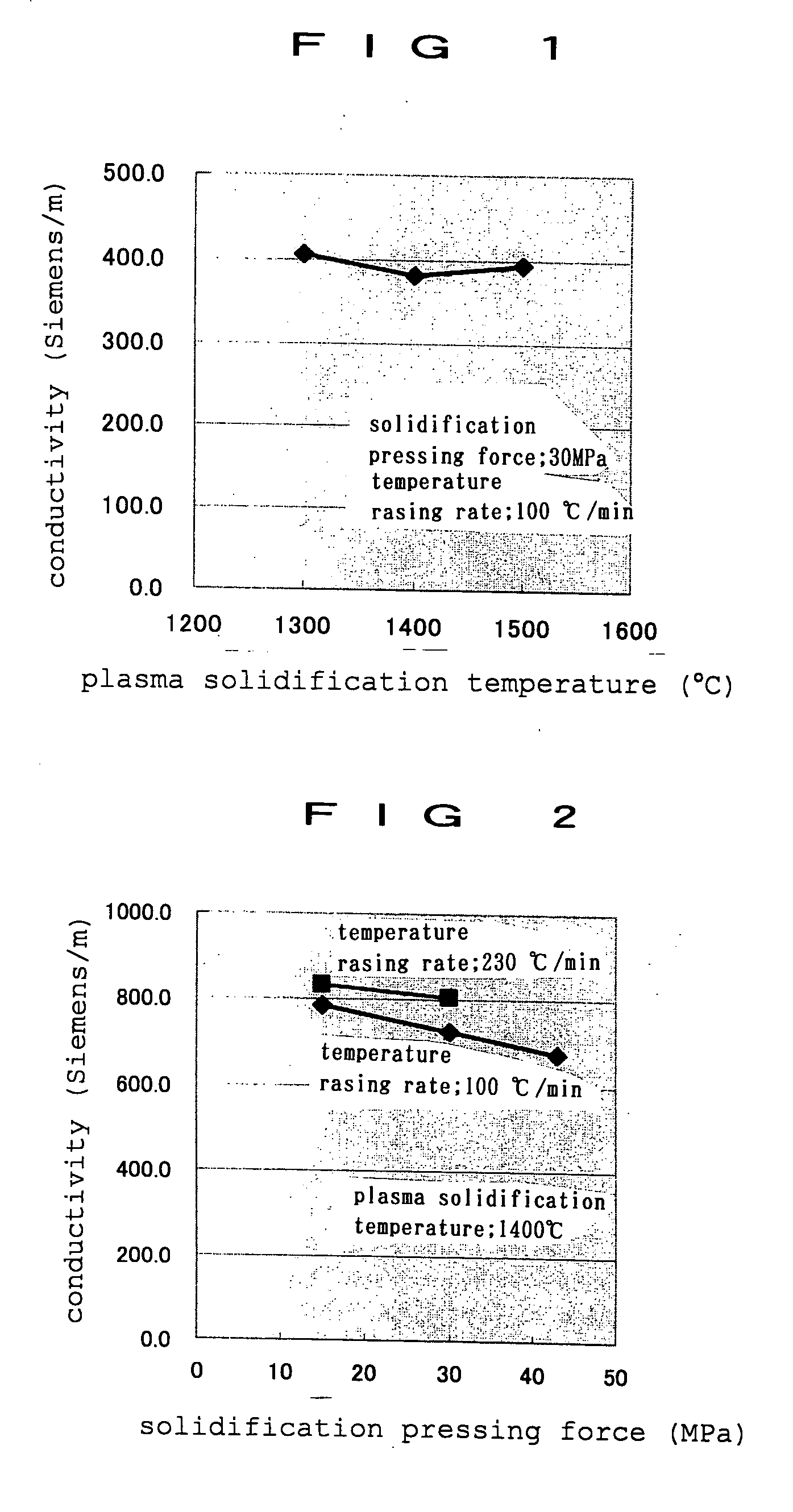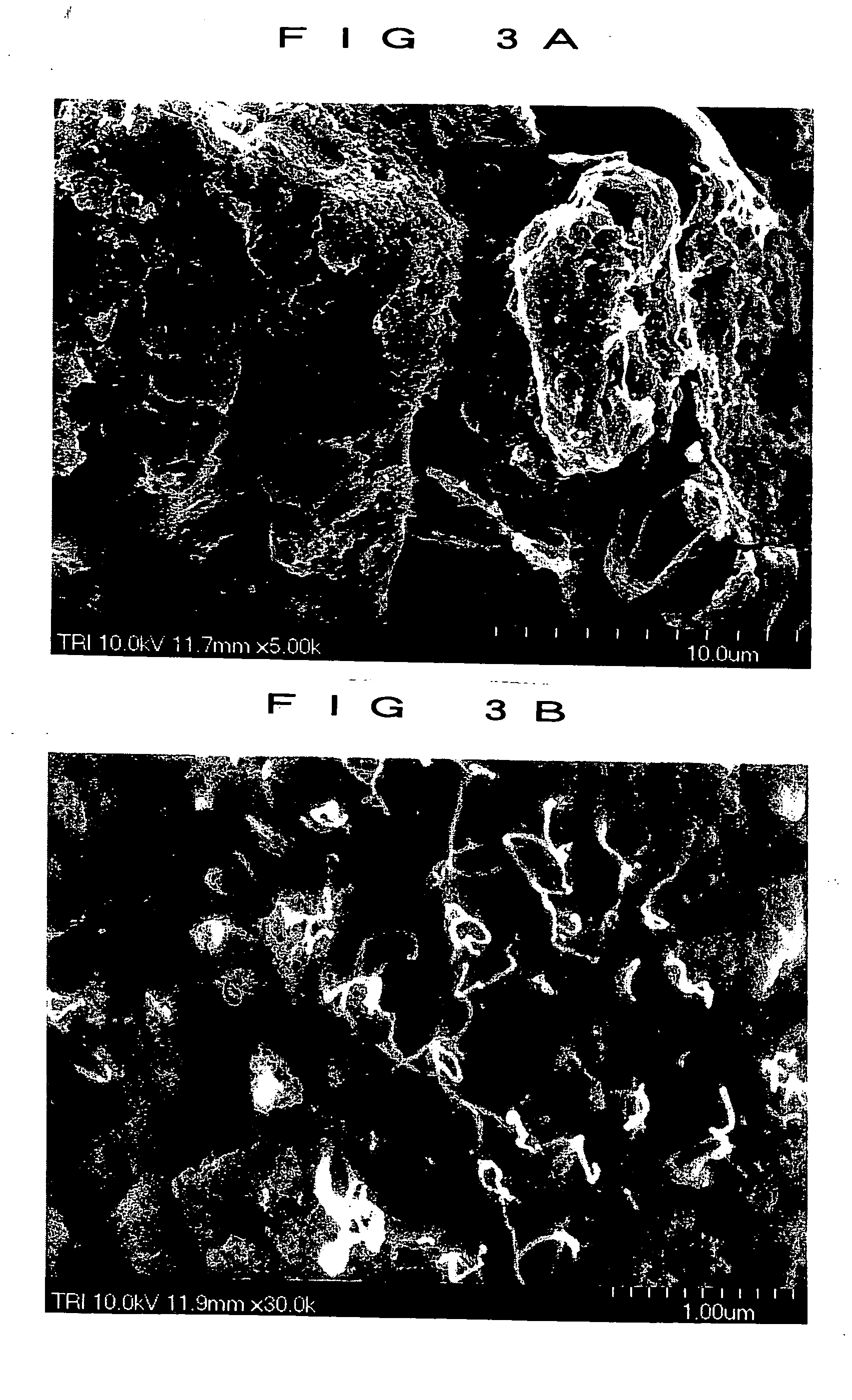Method for producing carbon nanotube-dispersed composite material
- Summary
- Abstract
- Description
- Claims
- Application Information
AI Technical Summary
Benefits of technology
Problems solved by technology
Method used
Image
Examples
example 1
[0049] An alumina powder having an average particle size of 0.6 μm and long-chain carbon nanotubes were dispersed by a ball mill using an alumina bowl and balls. First, 5 wt % of carbon nanotubes were compounded, and an alumina powder previously sufficiently dispersed was compounded, and these powders were kneaded and dispersed for 96 hours under dry condition.
[0050] Further, a nonionic surfactant (Triton X-100, 1 wt %) was added as a dispersing agent, and the mixture was wet-dispersed for 2 hours or more under ultrasonic wave. The resulting slurry was filtrated and dried.
[0051] The dried knead-dispersed material was filled in a die of a discharge plasma sintering apparatus, and solidified by plasma at 1300° C. to 1500° C. for 5 minutes. In this procedure, the temperature raising rate was 100° C. / min or 230° C. / min and a pressure of 15 to 40 MPa was loaded continuously. The electric conductivity of the resulting composite material was measured to obtain results shown in FIGS. 1 an...
example 2-1
[0052] A pure titanium powder containing a pure titanium powder having an average (peak) particle size of 10 μm or less and a pure titanium powder having an average particle size of 30 μm mixed at various proportions, and 10 wt % of long-chain carbon nanotubes were kneaded and dispersed by a ball mill using a titanium bowl and balls under dry condition for 100 hours or more.
[0053] The knead-dispersed material was filled in a die of a discharge plasma sintering apparatus., and sintered by discharge plasma at 1400° C. for 5 minutes. In this procedure, the temperature raising rate was 250° C. / min and a pressure of 10 MPa was loaded continuously. The electric conductivity of the resulting composite material was measured to obtain 750 to 1000 Siemens / m.
example 2-2
[0054] A pure titanium powder having an average particle size of 10 μm to 20 μm and 0.1 wt % to 0.25 wt % of long-chain carbon. nanotubes (CNT) were kneaded and dispersed by a planet mill using a titanium vessel under dry condition without using dispersion media, in combination of various time units of 2 hours or less and revolution number of the vessel.
[0055] The knead-dispersed material was filled in a die of a discharge plasma sintering apparatus, and sintered by discharge plasma at 900° C. for 10 minutes. In this procedure, the temperature raising rate was 100° C. / min and a pressure of 60 MPa was loaded continuously.
[0056] An electron micrograph of a forcible fracture surface of the resulting composite material (CNT 0.25 wt % addition) is shown in FIG. 3. An electron micrograph of a carbon nanotube in the form of network when FIG. 3A in a scale of the order of 10 μm is enlarged to a scale of the order of 1.0 μm is shown in FIG. 3B.
[0057] The heat conductivity of the resulting...
PUM
| Property | Measurement | Unit |
|---|---|---|
| Particle size | aaaaa | aaaaa |
| Particle size | aaaaa | aaaaa |
| Temperature | aaaaa | aaaaa |
Abstract
Description
Claims
Application Information
 Login to View More
Login to View More - R&D
- Intellectual Property
- Life Sciences
- Materials
- Tech Scout
- Unparalleled Data Quality
- Higher Quality Content
- 60% Fewer Hallucinations
Browse by: Latest US Patents, China's latest patents, Technical Efficacy Thesaurus, Application Domain, Technology Topic, Popular Technical Reports.
© 2025 PatSnap. All rights reserved.Legal|Privacy policy|Modern Slavery Act Transparency Statement|Sitemap|About US| Contact US: help@patsnap.com



